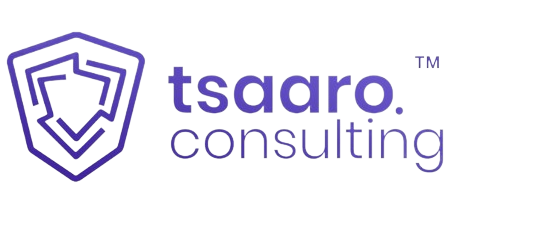Introduction
Current biometric verification, which identifies people based on their distinctive biological traits, has become increasingly popular in recent years. Biometric authentication is revolutionizing how we secure and simplify our digital lives, from using a fingerprint to unlock smartphones to entering high-security buildings. Its widespread usage is encouraged by claims of improved ease and security. However, biometric authentication can carry some hazards and issues, just like any other technology. In this article, we’ll look at the many kinds of biometric authentication, analyze their advantages, and critically assess any hazards they might pose.
Types of Biometric Authentications
The many biometric authentication types that give people and organizations a variety of alternatives to improve security and simplify access control procedures are discussed below.
1. Fingerprint recognition – It is a technique that examines the ridges and patterns on a person’s fingertips. Due to the great accuracy and simplicity of capturing fingerprints, it is frequently utilized in smartphones, access control systems, and law enforcement applications.
2. Facial recognition – It detects and authenticates people by examining the characteristics and measurements of the face. Applications including device unlocking, airport security, and surveillance systems have seen an increase in popularity.
Iris Scanning: The process of iris recognition entails the distinctive patterns found in each person’s iris, the colored portion of the eye. It is utilized in secure settings like government buildings and airports and gives excellent accuracy.
3. Voice Recognition: This technique examines a person’s vocal traits, speech patterns, and voice prints to verify their identification. Applications like speaker verification systems, voice assistants, and telephone banking all use voice recognition.
4. Additional Biometric Authentication Methods: Gait analysis, vein pattern recognition, hand geometry recognition, and signature recognition are other biometric identification techniques. Each of these techniques verifies people using physical or behavioral characteristics.
Benefits of Biometric Authentications
- Numerous advantages of biometric authentication make it the method of choice for confirming and authenticating people in a variety of settings. Increased security is a significant benefit. Biometric characteristics, such as fingerprints or facial features, are particular to each individual and are therefore challenging to copy or fake. When compared to conventional password-based systems, which can be compromised or forgotten, this uniqueness offers a higher level of security. Utilizing biometric authentication dramatically lowers the risk of identity theft and unauthorized access.
- Biometric authentication gives convenience in addition to security. Users are no longer required to memorize and input complicated PINs or passwords. Instead, users need just show a biometric feature, such as a face or fingerprint, to gain access. With this ease, user identification procedures are made simpler across a variety of gadgets and programs, saving time and lowering frustration.
- The precision and dependability of biometric systems are further advantages. To precisely match and validate biometric characteristics, these systems make use of cutting-edge algorithms and technology. The efficacy of the system as a whole is increased by the low number of false positives or false negatives and the high level of precision that guarantees trustworthy identification.
Risks and Concerns with Biometric Authentication
Although biometric authentication has many advantages, there are also some risks and issues to be aware of. For the installation of biometric systems to be responsible and secure, it is crucial to comprehend and handle these concerns.
These are some of the main dangers and issues with biometric authentication:
- Privacy – The gathering and storage of private biometric information, such as fingerprints or face photographs, is necessary for biometric authentication. Concerns about unauthorized access and exploitation of this extremely personal information are brought up by the possibility of data breaches. To prevent unauthorized access to biometric data, organizations must have strong security measures in place, such as encryption and secure storage.
- Vulnerabilities and spoofing techniques – Presentation attacks involve using counterfeit or altered biometric traits to deceive the system. For example, fingerprints can be replicated, and facial recognition systems can be tricked with photos or masks. Deepfakes, which are AI-generated manipulated videos or images, can also undermine the accuracy and reliability of facial recognition. Continuous advancements in biometric technology must be accompanied by robust anti-spoofing measures to mitigate these vulnerabilities.
- Legal and ethical ramifications – Organizations are required to abide by data protection laws and make sure that people give their informed consent before having their biometric data collected and used. To address the rights of persons with their biometric information, including access, retention, and deletion, clear policies, and procedures should be in place.
Mitigating Risks and Best Practices
Organizations and individuals should follow a few best practices to reduce the dangers connected with biometric authentication. Strong security measures must be implemented first. To prevent unauthorized access to biometric data, strong encryption, and safe storage methods must be put in place. To fix any discovered vulnerabilities and keep up with best security practices, biometric systems should regularly receive updates and patches.A multi-factor authentication strategy ought to be used. Organizations can develop a more reliable authentication system by adding biometric authentication to additional elements like passwords or tokens. Overall security is improved and dependence on a single authentication mechanism is reduced as a result. These are one of the few methods and practices organizations and individuals must keep in mind to mitigate such risks and protect the privacy of their biometric records.
Conclusion
In a nutshell, biometric authentication has many advantages, including improved security, user-friendliness, hassle-free, and precision but to achieve a responsible and secure implementation, it is important to address the risks and issues involved. Some of the main issues with biometric authentication are privacy, weakness, and the potential consequences regarding legal and ethical issues. To protect biometric data and reduce risks of unauthorized access and exploitation, organizations must prioritize data security, put anti-spoofing measures in place, and adhere to privacy legislation.Take the first step towards a secure your organization’s data by scheduling a call with our privacy expert team at Tsaaro Solutions today.













Excellent article! The depth of analysis is impressive. For those wanting more information, I recommend this link: FIND OUT MORE. Keen to see what others think!